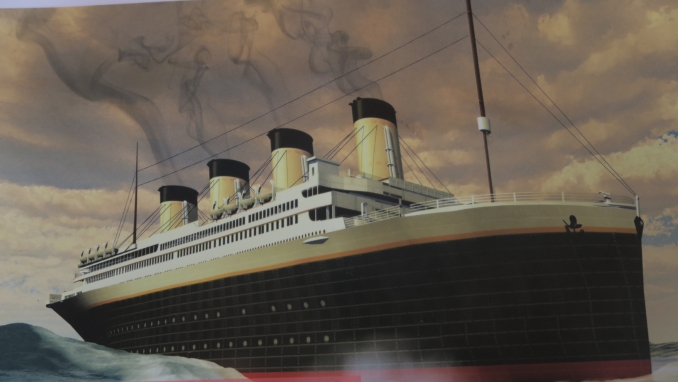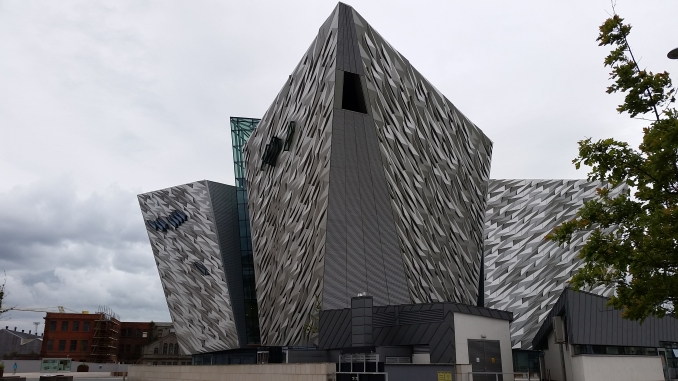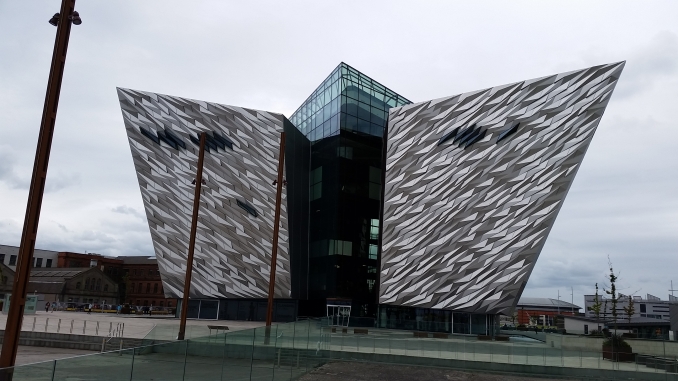Irish Tourist Destination - Titanic Belfast - Named Best Visitor Attraction In Europe
The Titanic exhibition in Belfast (Irish: Béal Feirste) in the northeast of Ireland (Irish: Éire), has been named Europe’s Leading Visitor Attraction at the World Travel Awards 2016. Known as Titanic Belfast, more than three million people have visited the attraction since it opened in 2012. It occupies the same location where the Titanic was built and launched by the shipbuilders Harland and Wolff. They built large slipways and graving docks to accommodate the construction of Titanic and her sister ships Olympic and Britannic. The ill-fated Titanic struck an iceberg and sank during her maiden voyage in 1912. Titanic Belfast commemorates the construction and sinking of Titanic with interactive exhibits, artefacts, replica cabins, nine galleries of artwork, photographs and designs.
At the time, news of the terrible sinking of the Titanic spread around the world and its horror has held a fascination for people every since. After setting out on its maiden voyage across the North Atlantic from Southampton on 10 April 1912, the ship called at Cherbourg in France and the Irish port of Cobh (Irish: an Cóbh), which in those days was known as Queenstown, on the south coast of County Cork. Titanic headed west towards New York. Four days into the crossing, at 11.40pm on 14 April 1912, about 375 miles (600 km) south of Newfoundland, she hit an iceberg. Titanic sank two hours and forty minutes later with the loss of 1,517 people. RMS Carpathia arrived on the scene some two hours later and was able to rescue the estimated 706 survivors from the ship's lifeboats.
Images: Titanic image from the magazine Good News. Pictures courtesy of Steve Toms.
The venue is open daily all year round, excluding 24th - 26th December and further information is available on the Titanic Belfast exhibition website.



- Eibhlin O'Neill's blog
- Log in to post comments





